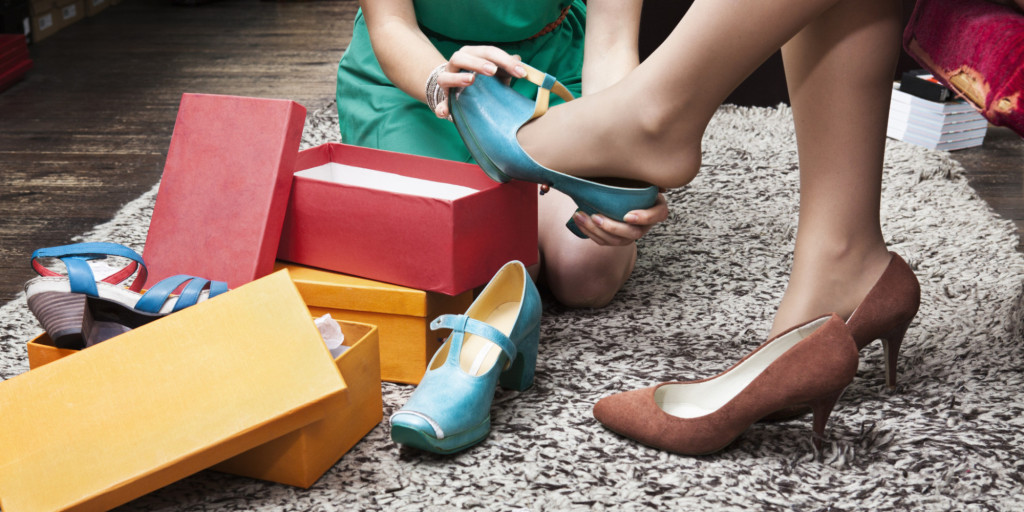- When trying on shoes, make sure you’re wearing the appropriate sock or stocking. For instance, if you’re trying on boots that you’d wear with heavy socks, don’t try them on with thin nylons.
- The best time to try on shoes is usually at the end of the day, when your feet are most swollen. However, don’t abuse this rule of thumb: if you’ve just completed a sightseeing tour which required 10 miles of walking, and that’s not your typical exercise routine, then by all means don’t try on office heels that night! The point of waiting until the end of the day is to make sure that the footwear can fit you at your widest– kind of a “worst case scenario” check.
- The first shoe you try on should be for your larger foot. For most people, their larger foot is the opposite from the hand they write with. For example, if you’re right handed, your left foot might be bigger. Always fit the pair of shoes to this foot. Even though there are about 20 separate parts to an average shoe, the fact remains that they are mass-produced. It’s up to you to customize the fit– a small heel pad, for instance, works wonders.
- Stand up with your shoes on. Walk around a bit. You should be able to wiggle your toes in the front of the shoe. For most footwear, your toes will be able to touch the top of the shoe, but there should be 3/8″ to 1/2″ of space between your longest toe and the end of the shoe.
- Don’t buy shoes that are too tight. If you’re at the point where you’re praying they will stretch to be comfortable, they probably won’t. It’s true that soft leather and suede give slightly, molding to your foot, but they will not dramatically increase in width or length. There’s a difference between a “snug”, comfortable fit and a “tight”, uncomfortable fit. A few laps around a carpet should help you decide how you feel.

Shop assistant putting shoes on clients foot.

